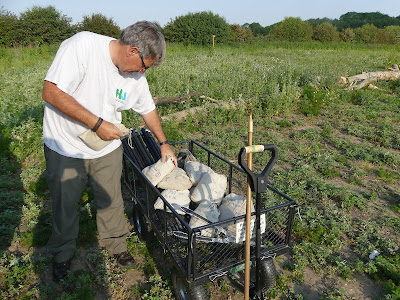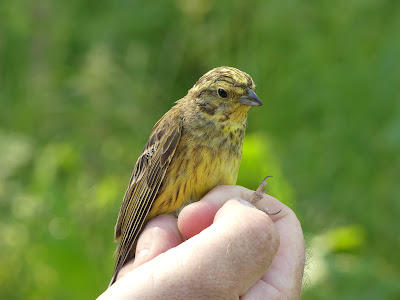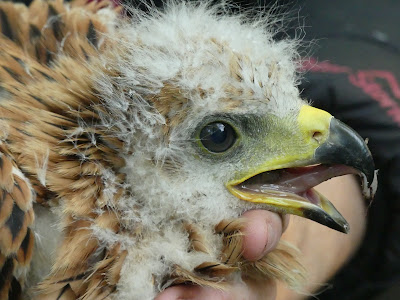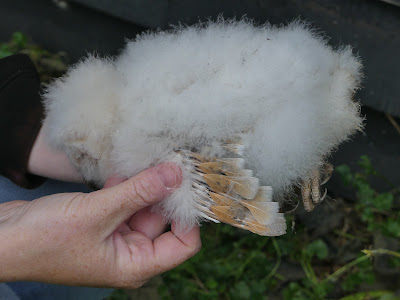A return to the site to mark the second brood of Marsh Harriers and the four chicks that we'd seen on 11/06 were now just three. However,these three were well advanced in their development with much less down than the pulli in the first nest.
We were joined by ERB and PCD who each ringed and tagged one of the chicks and I, DKL ringed and marked 6I. Thanks again to the guys from North West Norfolk ringing group who came to provide more training on best practice regarding handling and tagging of these rather feisty young birds. It is great, in particular, to have the opportunity to learn the toe span technic for sexing young from the ringers that first introduced the method to the UK.
In the coming months and years we should get reports of at least some of the young harriers marked at this site, providing data on where they travel, breed and longevity. All seven chicks marked at this site have been sired by the same male that has supported both hens to feed the broods. It's an indication of a plentiful food supply when one bird can supply the same as two males in an alternative area.
Total: 4
Kestrel - 3
Marsh Harrier - 3




































